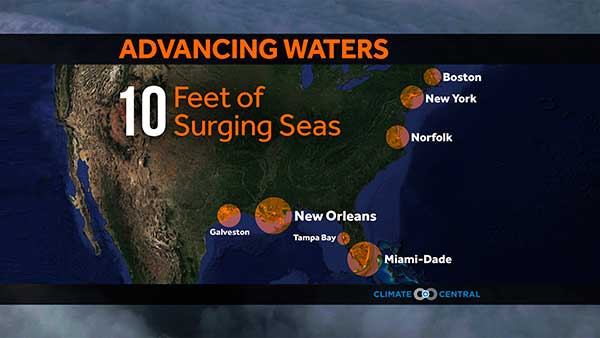Since the late 19th century, global sea level has risen an average of 8 inches. As the climate continues to warm from the emission of greenhouse gases, ocean water will further expand and glaciers and ice sheets will continue to melt, causing sea level rise to accelerate through this century. By the end of this century, an additional rise between 1 and 4 feet is expected, with many scientists thinking these amounts are on the conservative side. As the Atlantic hurricane season gets underway this week, sea level rise adds to the threat imposed by hurricane storm surge.
Even if there were no immediate increase in the strength of hurricanes from climate change, continued sea level rise means storm surge will be more destructive. As little as 8 inches can be the difference between water just getting into a home and water flowing into electrical outlets. This puts several important U.S. cities at risk from advancing waters.
Critical military infrastructure, such as the country’s largest naval base in Norfolk are in jeopardy. Additionally, huge amounts of petroleum infrastructure are threatened near New Orleans and Houston. While storm surge at a specific point is highly dependent on coastline and hurricane size, we used 10 feet of storm surge above high tide to approximate a big event. To more closely look at how sea level rise affects the nation’s coasts, visit our interactive tool,Surging Seas.
Even though the U.S. has not been hit by a Category 3+ hurricane since 2005, storm surge is a reminder that hurricanes of all sizes are destructive. This was the case with Sandy in 2012. It was a Category 1 hurricane just before it transitioned to an extratropical storm at landfall. But its large size, combined with the concave coastline at New York City, delivered a 9-foot surge at Battery Park, and vividly illustrates that storm surge is not solely dependent on the category of a hurricane. That extra 8 inches of sea level rise in the last century exposed an additional 75,000 people and $8.9 billion in property in New York City.
